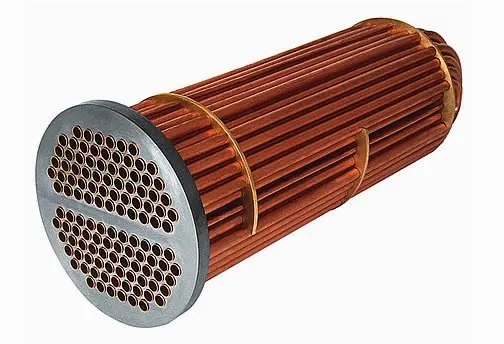- Contact Us
- Call Us
- Menu

Hydrocarbon and non-hydrocarbon based gases can be more efficiently stored and transported in a liquified state, providing higher media density and corresponding product weight per container. Upon reaching their final destination, the liquid can be reheated, returning to a gaseous state for distribution and use. Typical liquified gases include natural gas, oxygen, butane, propane, and nitrogen.
There are several ways to affect the physical change from liquid to gas, and picking the best option is dependent on criteria such as; 1) available energy sources; 2) plant location; 3) climate conditions; and 4) plant infrastructure.
The change from liquid to gas phase usually requires one or more vessels properly sized and designed to accommodate the vastly increased volume of the evaported liquid, handle the storage or distribution pressure of the gas, and be compatible with the process media. In most plants today, the gradual process of warming the liquified gases is done with steam-heated or oil-heated “heat exchangers” or “tube bundles”.
Some heat exchanger systems may, instead of steam, use steam-heated intermediary fluids such as oil, water, or glycol-water solution to provide a smoother rate of heat transfer to the evaporating liquid. This method can employ two heat exchangers, one transferring heat from steam to the intermediary fluid, then another to transfer heat from the intermediary fluid to the liquified gaseous product to evaporate it.
Steam heated, closed-loop circulation systems play an important role in providing an efficient, low-cost and compact method to accommodate liquid vaporization. Steam is available in many industrial plants, providing a comparatively inexpensive and readily available source of heat energy. Heat exchangers are available in a range of pre-engineered capacities and forms, but it is quite common for these components to be custom fabricated to meet very specific requirements. Engineers can design their own systems from the component level, or provide performance requirements to the manufacturer and have a skid mounted unit produced, ready for connection to electric power (for control systems), energy source (steam, oil or water) and process inlet and outlet lines.
These systems can be quite technical, with numerous design considerations. The path to maximized safety and efficiency includes consultation with a heat exchanger expert as part of specification and design process. A combination of your high level process knowledge and their product and application expertise will yield the best outcome.